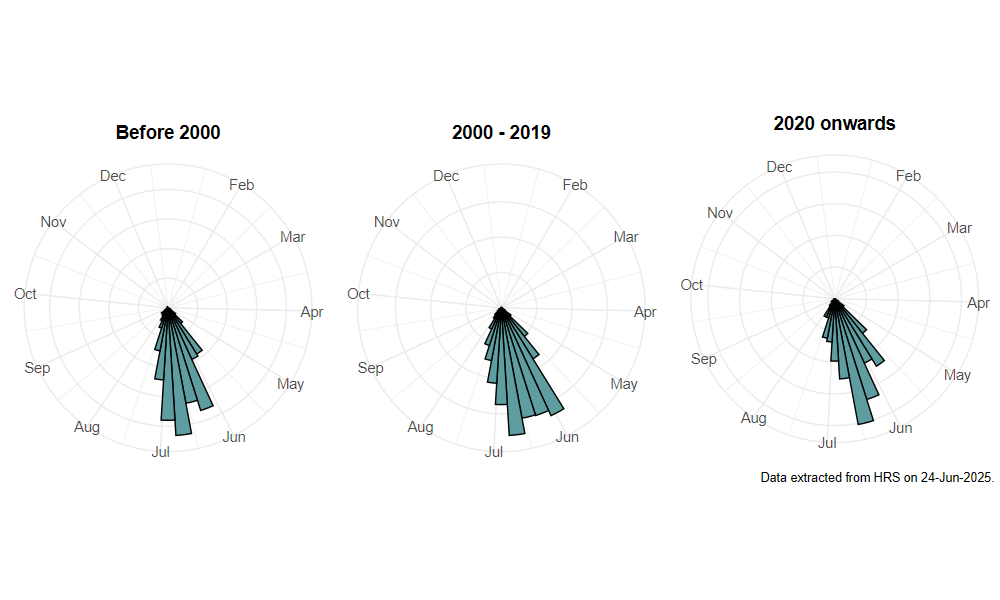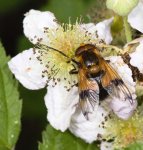Volucella inflata (Fabricius, 1794)
Identification
Identification difficulty = 2. ![]()
![]() according to Ball & Morris, 20241
according to Ball & Morris, 20241
Biology
The larva develops in sap runs, such as those on Oak Quercus sp. Females have been observed ovipositing in sap runs, including those caused by Goat moth Cossus cossus caterpillars. It is generally found in, or close to woodland with over mature trees, where adults visit flowers such as brambles Rubus sp., Dog Rose Rosa canina and Hogweed Heracleum sphondylium in sunny, open rides and glades. A mark-release-recapture study in Northamptonshire (Ball & Morris, 2004) showed that even though sap runs are difficult to find, populations of this fly can be very large.
Flight period
The following plots show the number of unique records per week excluding those reported to be of immature stages.

Status
Was listed as 'Notable' by Falk, 19912, but dropped from this status by Ball & Morris, 20143 who consider it LOWER RISK.
Distribution
There has been some expansion of range northwards and westwards, although nowhere near as marked as in some other Volucella, with recent records from South Yorkshire and in South Wales. Locally frequent in heavily-wooded areas in the south of Britain, mainly south-east of a line from the Severn to the Wash.

Trends
The following plots show the Frescalo TFactor vs year and a map of the rescaled frequency (all records) for the species.
-
Ball, S., & Morris, R. (2024). Hoverflies of Britain and Ireland. WILDGuides (3rd ed.). Oxford: Princeton University Press. ↩
-
Falk, S. (1991). A review of the scarce and threatened flies of Great Britain. ( No. 39). Research and Survey in Nature Conservation (pp. 1–194). Peterborough: NCC. ↩
-
Ball, S., & Morris, R. (2014). A review of the scarce and threatened flies of Great Britain. Part 6: Syrphidae. ( No. 9). Species status (pp. 1–130). Peterborough: JNCC. ↩
